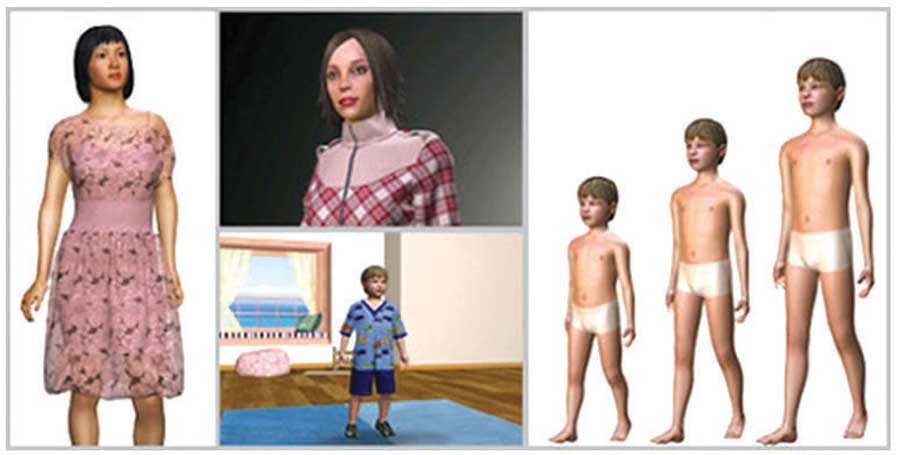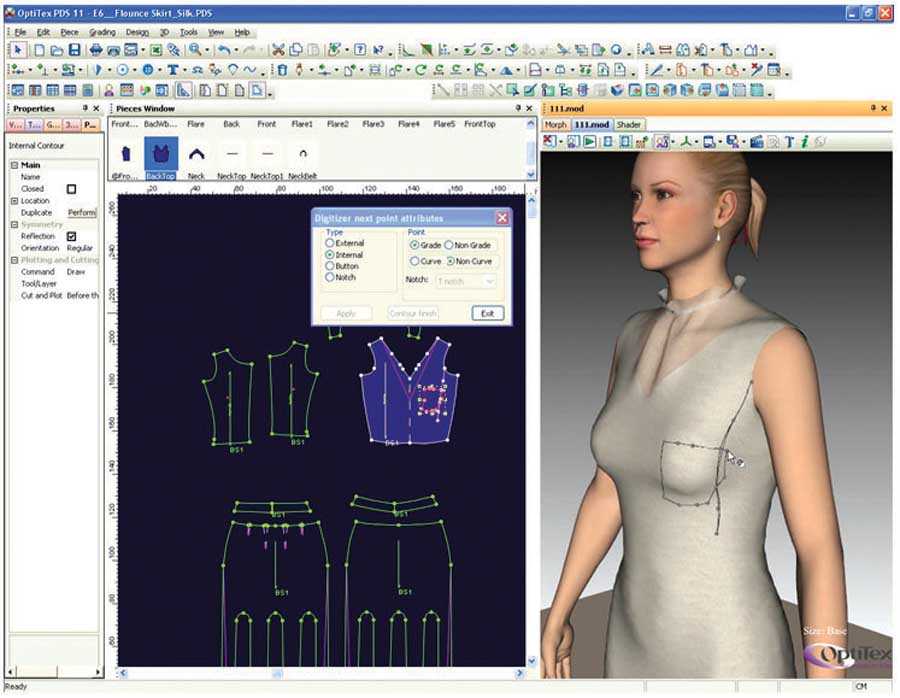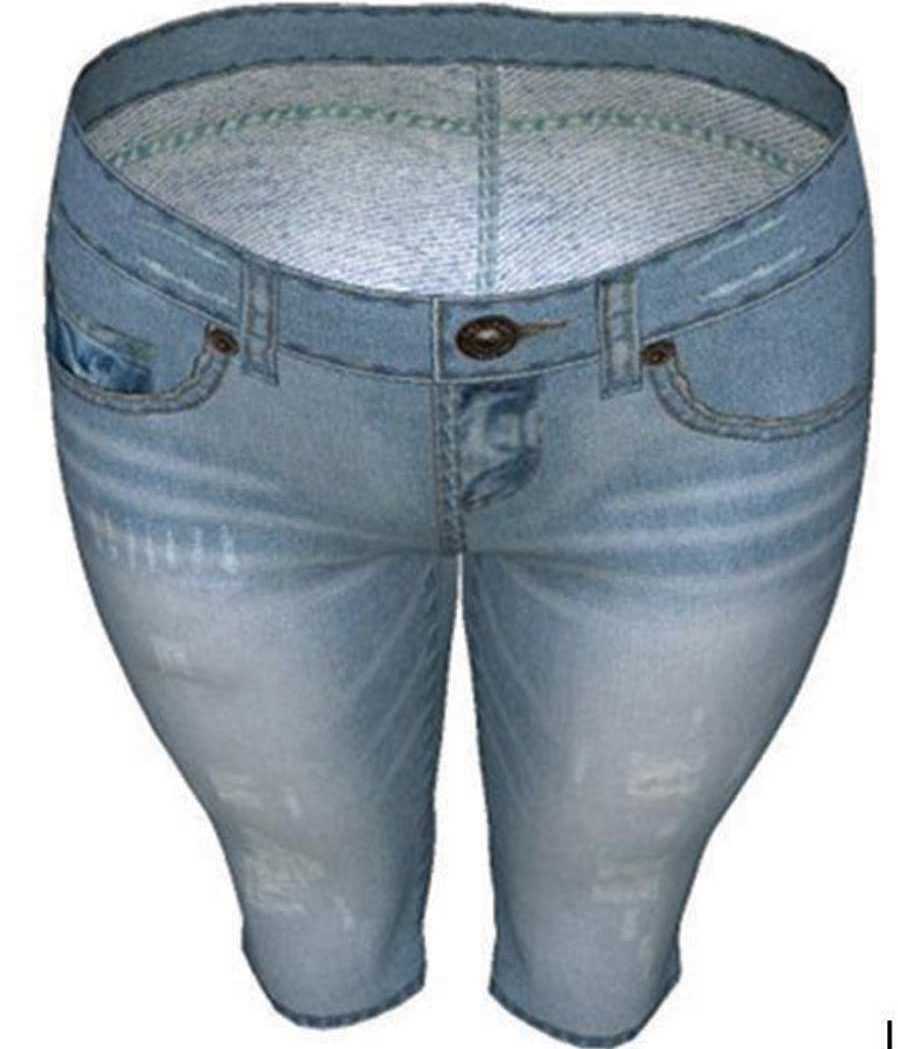
Pattern making of apparel is very successfully computerized by apparel CAD software where pattern is generated in computer using drafting method. Grading and marker making are also other popular functions that are successfully computerized and commercially accepted by the industry. However, all these software solutions treat fabrics as two dimensional and how the pattern will behave and be viewed while worn on human body (three dimensionally) cannot be modelled using existing computer solutions. Team StitchWorld reviews the 3D garment simulation solutions – how it works, who all provide the solutions and how it can benefit users…
Modelling fabric fall or drape was first attempted by Asahi 3D CAD from Japan and was displayed for the first time to the world during IMB 1997. What followed was a mad rush of apparel CAD manufacturers to start development of 3D simulation module, either in-house or in collaboration with specialized 3D simulation software developers. Gerber for a brief period supported connectivity of their CAD designs to Asahi 3D CAD. While Asahi demonstrated static drape image of a garment in static form once some key fabric properties are fed, software developers started exploring dynamic simulation of garment once the subject is in motion.
Miralab from Switzerland, led by Dr. Nadia Tahlmann and NTU from UK, led by Dr. Stephen Grey contributed significantly in the research of modelling fabric drape simulation and virtual catwalk. During the beginning of the 21st century, a few players came out with first version of 3D garment simulation software which were capable of showing how a garment will behave when any person wears it and stands straight as well as when the person moves. After almost a decade, 3D simulation of garment is now a well-established application with growing use by garment manufacturers and buyers around the world.

How 3D Garment Simulation Solutions works?
A pattern is a 2-dimensional representation of a 3-dimensional object; ultimately the garment will be worn by someone, and the pattern maker is responsible for the way that garment fits on the final wearer. Many pattern makers use muslin draping on the dress form to test their pattern blocks and basic shapes while they are drafting (or after they have drafted) the pattern, to make sure that the balance and slopes of the garment are correct. 3D simulation software takes a digital (CAD) pattern and a set of fabric values (such as stretch, weight, etc.) and creates a digital sample of the garment, draped on a 3D virtual fit model, using the latest in cloth simulation technology. Users of the software have to provide the software with three things; the pattern, the type of fabric and the measurements and shape of the fit model and the system will accurately create the sample. The software module provides all the expertise required to take a 2D design, add data on fabric and texture, and turns it into truly realistic 3D garment visualization on true-to-life customizable models.
These software avatar structures can import body scanner data to make 3D models. The exceptionally detailed, 3D models (avatars) can be customized to a huge array of parameters, from age and gender, through body measurements and posture, to skin tone and hair style, and even through the stages of pregnancy. Some software solutions offer the user a wide range of highly detailed parametric mannequins that feature as many as 65 adjustable body measurements, including several posture positions that can be saved for multiple uses. Users can create their own specific base-size mannequins (virtual fit models). Some of the software solutions boast enhanced fabric thickness support and smoothing capabilities, alongside fabric testing methods for a more lifelike presentation of the garment.

As a pattern maker, it’ s often difficult to understand exactly what needs to be done to correct a pattern until you have seen it sewn and draped on a mannequin or a person. 3D simulation is one method to create patterns efficiently and accurately, which ultimately reduces the time spent making samples and getting approvals.
The system is designed with users in mind, and is easy to learn and use. Users can create many samples in much less time than it would take to sew and deliver a real garment.
Different softwares offer above solutions through different modules like 3D avatar creation, 3D Garment Draping, 3D Visualization, etc. Some softwares also offer digitizing on a 3D view and see the results on the 2D pieces, these are called 3D flattening.
After the virtual 3D garment is put on virtual dummy, the software enables you to see the horizontal slice of image at any portion of the body showing the ease amount along girth. For fitted garment the software can generate colour coded 3D image (similar to heat sensing image) to show where the virtual garment is excessively tight on body and require more ease. The function is very helpful in objectively defining and correcting the garment fit which otherwise can be only felt by live model during live-fitting.
Some softwares even offer inside view of the garment, with full visualization of fabric & trims as if turned inside out. This mode is called back view, as opposed to the normal face view.
How 3D simulation solutions benefit users?
Using 3D simulation, a fashion software company can reduce time and cost of multiple iterations of sample garment. By reducing the tedious and costly process – in both time and material – of fitting, experimenting, re-drawing patterns, etc. 3D simulation actually expedites the entire product development process.
The anatomically correct avatars (3D human models) of various ages from infancy to adult, with various body anatomies allows more product lines, catering to a wider base of customers in such diverse market sectors as children apparel, pregnancy wear, sportswear and lingerie.
3D design and communication technology allows for, less travelling expenses, less prototypes, and less samples, not only reducing expenses but also minimizing fabric waste. It also provides an excellent tool for sales and merchandising, allowing users to create 3D catalogs easily and professionally. Live-fitting is an important function in sample approval process, where tightness and/or looseness is felt by the wearer and conveyed for correction. However this process is very subjective. 3D simulation enables objective evaluation of tightness and/or looseness in a garment while worn on a virtual dummy, thus either minimizing or eliminating the iteration after live fitting process.
3D simulation allows all the players involved in the development cycle to validate styles and collections, ensuring the designer’ s original intention is respected, even before the first physical prototype is created. 3D simulation facilitates collection review among colleagues scattered across the globe, optimizing the decision-making process between the various parties involved (designers, pattern makers, developers, sales and marketing teams
Conclusion
The solution means that one can make design decisions by visualizing the garment digitally – there is no need to buy fabric, stop work on the project until approval from buyer arrives by courier, or waits in the sample room line before seeing how the sample looks physically. Although the solution offers immense potential in reducing the product development time in apparel supply chain by minimizing and/or eliminating the costly iterations, acceptability by manufacturers is slower than expected. The brands and retailers have to take lead in changing the traditional sample development and approval process by adapting to new age technology and rational solutions.

Post a Comment